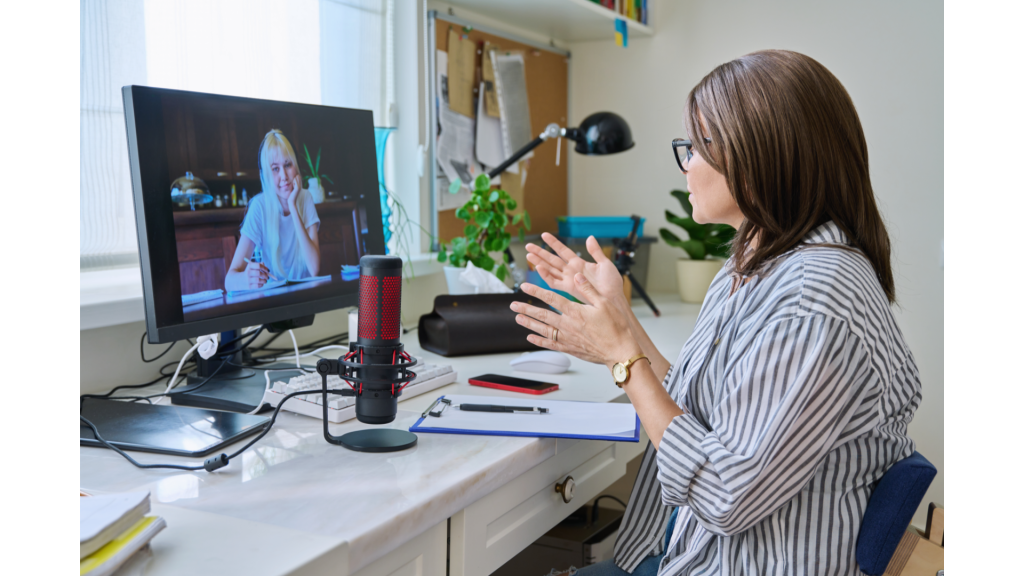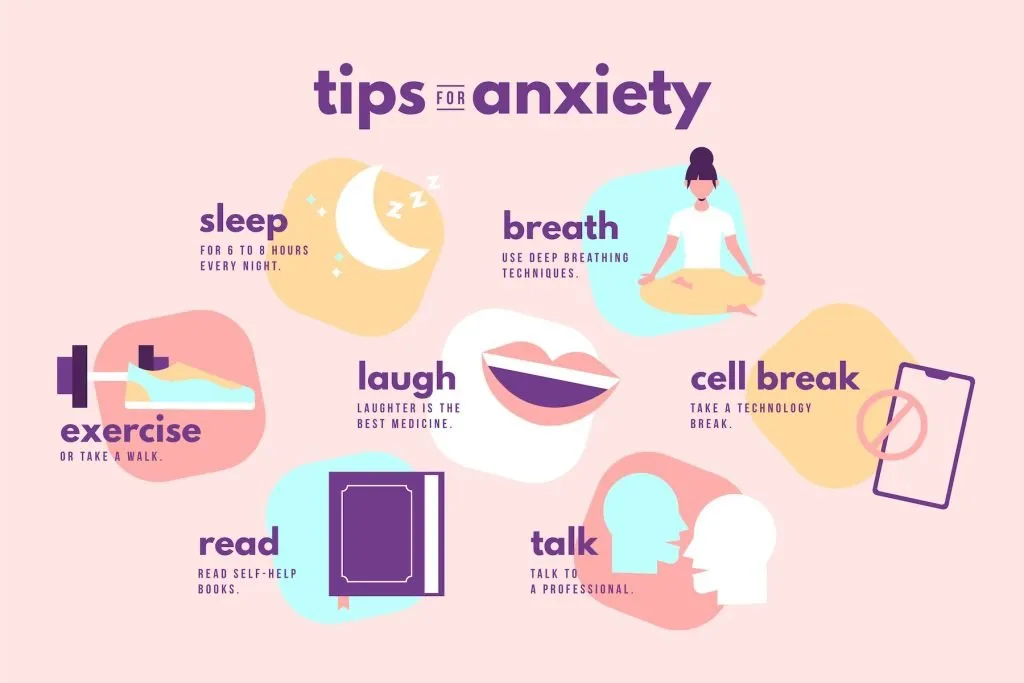About the author
Page last updated by Dr Elaine Ryan
A step by step guide
Anxiety can be a daunting adversary. Even though it’s such a common human experience, you can often feel very alone and overwhelmed by it, I know I certainly did, which is why I have written this quick and dirty guide to overcoming anxiety.
Understanding and eventually overcoming anxiety is not a quick fix. It’s a journey that requires patience, self-compassion, and practical strategies. This is such an important point I am trying to make, so I want to expand on my last sentence.
Patience and self-compassion with yourself is needed; this includes how you talk to yourself inside your head. Make sure your conversations with yourself are as kind as they would be if you were talking to someone else. Patience is also needed during therapy, whether undertaken in my clinic, or using my self-help courses, or working with other therapists. The practical strategies mentioned in the preceding paragraph refer to therapy and behavioural experiments in CBT.
This article aims to guide you through this journey. It provides a step-by-step approach to managing anxiety, from understanding its roots to implementing effective coping strategies.
Whether you’re dealing with occasional anxiety or a diagnosed anxiety disorder, this guide can offer valuable insights. It’s also a resource for those seeking to support others in their battle against anxiety.
Retrain Your Brain®


Understanding Anxiety and Its Symptoms
Anxiety is a natural response to stress. It’s a feeling of fear or apprehension about what’s to come. In this article, I will not cover anxiety in depth as I have already written a detailed guide to anxiety, which you can read in your own time.
However, when anxiety becomes persistent and overwhelming, it can interfere with daily activities. This is when it becomes an anxiety disorder.
Symptoms of anxiety can vary widely. They can be physical, emotional, or both.
Common symptoms include:
- Feeling nervous, restless, or tense
- Having a sense of impending danger or doom
- Increased heart rate
- Rapid breathing (hyperventilation)
- Sweating
- Trembling
- Feeling weak or tired
- Difficulty concentrating
- Sleep disturbances
For a complete list and explanation of all the symptoms of anxiety, please see here.
Understanding these symptoms is the first step towards managing anxiety. It helps you recognize when anxiety is taking hold and when to apply coping strategies.


Identifying Your Anxiety Triggers
Anxiety triggers are specific situations or thoughts that induce anxiety. They can be anything from social situations to financial worries, health concerns, or even certain foods or drinks.
Identifying your personal anxiety triggers is crucial. It allows you to anticipate and prepare for situations that may provoke anxiety.
Keep in mind that triggers can be unique to each individual. What provokes anxiety in one person may not affect another in the same way.
Remember, understanding your triggers is not about avoiding them entirely. It’s about learning how to manage your response to them effectively.
Step 1: Mapping Out Anxiety Patterns
Mapping out your anxiety patterns involves tracking when and where you feel anxious. It also includes noting what you’re doing and thinking at those times.
This can be done through journaling or using an anxiety-tracking app. VerywellMind has a good list of apps, so I won’t repeat it here. The goal is to identify patterns and common themes in your anxiety.
Understanding these patterns can help you anticipate anxiety-provoking situations. It also aids in developing effective coping strategies.
Remember, this step requires patience and consistency. It’s a process of self-discovery that can provide valuable insights into your anxiety.
Step 2: Breathing Techniques and Mindfulness
Breathing techniques are a powerful tool for managing anxiety. They help calm the mind and body, reducing the intensity of anxiety symptoms.
One effective method is deep breathing. This involves inhaling deeply through your nose, holding your breath for a few seconds, and then exhaling slowly through your mouth.
Practising mindfulness is another effective strategy. It involves focusing on the present moment without judgment. This can help you break free from the cycle of anxious thoughts.
Here are some mindfulness exercises you can try:
- Body scan meditation: Focus on different parts of your body, noting any sensations you feel.
- Mindful eating: Pay attention to the taste, texture, and smell of your food.
- Mindful walking: Focus on the sensation of your feet touching the ground.
Remember, like any skill, mindfulness and deep breathing require practice. Start with short sessions and gradually increase the duration as you get more comfortable.
Step 3: Physical Exercise and Diet
Physical exercise is a natural anxiety reliever. It releases endorphins, the body’s natural mood boosters. Regular exercise can also improve your sleep, which is often affected by anxiety.
Try to incorporate at least 30 minutes of moderate exercise into your daily routine. This could be anything from a brisk walk to a yoga session. Find an activity you enjoy to make it easier to stick to.
Diet also plays a crucial role in managing anxiety. Certain foods can exacerbate anxiety symptoms, while others can help reduce them.
Here are some dietary tips to consider:
- Limit caffeine and alcohol: Both can trigger anxiety and panic attacks.
- Eat balanced meals: Try to include lean proteins, fruits, vegetables, and whole grains in your diet.
- Stay hydrated: Dehydration can cause mood changes.
Remember, changes in diet and exercise habits won’t eliminate anxiety overnight. But over time, they can significantly reduce your anxiety levels and improve your overall well-being.
Step 4: Establishing a Routine and Adequate Sleep
Establishing a consistent daily routine can provide a sense of control. It can reduce anxiety by making your day predictable and manageable. Try to wake up, eat, work, exercise, and sleep at the same times each day.
Adequate sleep is also crucial for managing anxiety. Lack of sleep can exacerbate anxiety symptoms and make it harder to cope with stress. Aim for 7 to 9 hours of sleep per night.
Here are some tips for improving your sleep:
- Create a sleep-friendly environment: Keep your bedroom dark, quiet, and cool.
- Establish a bedtime routine: This could include reading, taking a warm bath, or practising relaxation exercises.
- Limit screen time before bed: The light from screens can interfere with your body’s sleep-wake cycle.
Remember, everyone’s sleep needs are different. Find what works best for you and stick to it. Consistency is key when it comes to sleep and routine.
Step 5: Cognitive-Behavioural Strategies
Cognitive-behavioural therapy (CBT) is a common treatment for anxiety. It focuses on identifying and changing negative thought patterns that lead to anxiety. You can use CBT strategies on your own or with the help of a therapist.
Here are some CBT strategies you can try:
- Journaling: Write down your thoughts and feelings to identify negative patterns.
- Cognitive restructuring: Challenge negative thoughts and replace them with positive ones.
- Behavioural activation: Engage in activities that you enjoy and that make you feel good.
Remember, it takes time to change thought patterns. Be patient with yourself.
Challenging Negative Thoughts
Negative thoughts can fuel anxiety. It’s important to challenge these thoughts instead of accepting them as truth. Start by identifying your negative thoughts. Write them down.
Next, ask yourself if these thoughts are based on facts or feelings. Often, they are based on feelings, not facts. Challenge these thoughts by looking for evidence that contradicts them.
Finally, replace the negative thought with a positive one. This can help reduce anxiety and promote a more positive mindset.
Exposure Therapy Basics
Exposure therapy is another effective strategy for overcoming anxiety. It involves gradually facing your fears instead of avoiding them. The goal is to reduce the fear response over time.
Start small. If you’re afraid of public speaking, start by speaking in front of a small group. Gradually increase the size of the group as your confidence grows.
Remember, exposure therapy should be done gradually and at your own pace. It’s okay to take small steps. The goal is progress, not perfection.
Step 6: Building a Support Network
Having a strong support network is crucial in overcoming anxiety. This network can include friends, family, or support groups. They can provide emotional support and practical help.
Start by reaching out to people you trust. Share your experiences and feelings with them. You might be surprised by how understanding and supportive they can be.
Consider joining a support group. It can be comforting to connect with others who are going through the same experiences. You can learn from each other and provide mutual support.
Remember, it’s okay to ask for help. You don’t have to face anxiety alone.
Step 7: Setting Realistic Goals
Setting realistic goals is an important part of overcoming anxiety. These goals should be specific, measurable, achievable, relevant, and time-bound.
Start by identifying what you want to achieve. This could be reducing the frequency of your anxiety attacks or being able to manage your triggers better.
Next, break down your goal into smaller, manageable steps. This makes the task less overwhelming and more achievable. Celebrate each small victory as you progress towards your larger goal.
Remember, overcoming anxiety is a journey. Be patient with yourself and don’t rush the process.
Step 8: Professional Help and Medication
There may come a time when professional help is needed. This is nothing to be ashamed of. Therapists and psychologists are trained to help you navigate your anxiety.
Medication can also be a useful tool. It’s not for everyone, but it can provide relief for some. Always consult with a healthcare provider before starting any medication.
Remember, seeking help is a sign of strength. It shows you’re taking control of your mental health.
Lastly, always keep your doctor informed about your anxiety and any treatment you’re undergoing. They can provide valuable guidance and support.
Maintaining Progress and Self-Care
Overcoming anxiety is a journey, not a destination. It’s important to keep up with the strategies that work for you. This includes regular exercise, a balanced diet, and adequate sleep.
Self-care is also crucial. This can be as simple as taking a warm bath, reading a book, or spending time in nature. Make time for activities that bring you joy and relaxation.
Remember to be patient with yourself. Progress may be slow, but it’s still progress. Celebrate your small victories along the way.
Here are some self-care ideas to consider:
- Practice mindfulness or meditation
- Engage in a hobby or creative outlet
- Spend time with loved ones
- Take a walk in nature
- Listen to calming music
Recognizing Signs of Progress
Recognizing signs of progress is an important part of overcoming anxiety. It can boost your confidence and motivation.
Signs of progress can be small. Maybe you’re sleeping better, or you’re able to handle stress more effectively.
Perhaps you’re not as worried about the future, or you’re enjoying life more. These are all signs that you’re making progress.
Remember, every step forward, no matter how small, is a victory. Celebrate these moments and use them as motivation to keep going.
Conclusion and Encouragement
Overcoming anxiety is a journey that requires patience and perseverance. It’s not always easy, but it’s definitely possible.
Remember, you’re not alone in this journey. Reach out to others for support when you need it.
Don’t be too hard on yourself. Celebrate your progress, no matter how small it may seem.
Finally, keep in mind that it’s okay to seek professional help.
This isn’t something you need to handle by yourself.
With the right tools and support, you can overcome anxiety and live a happier, healthier life.
